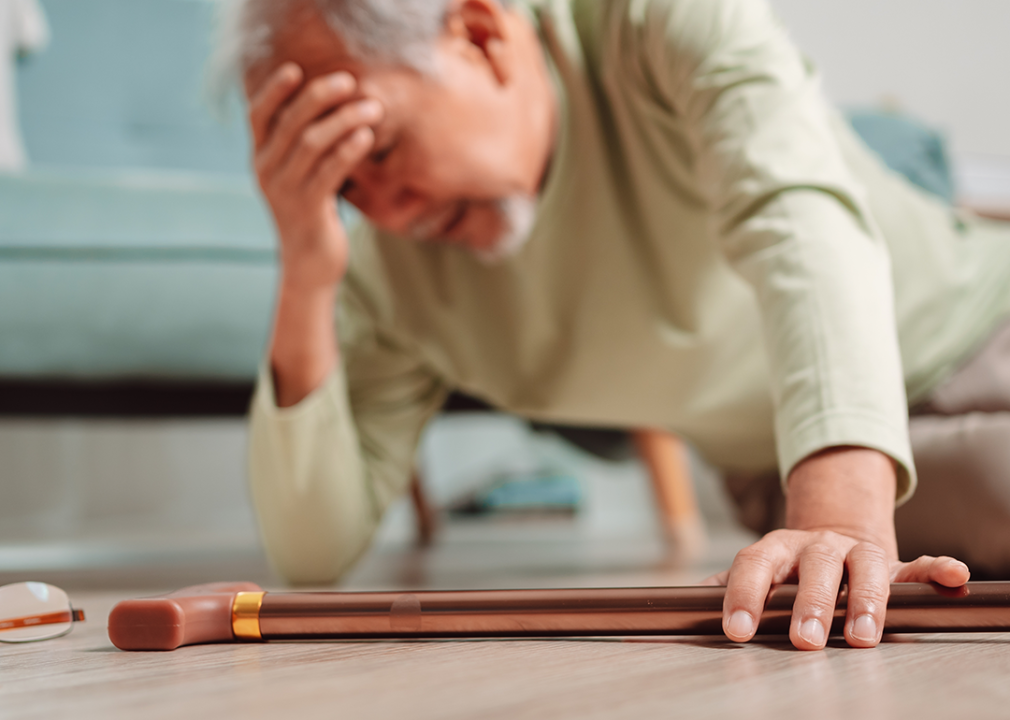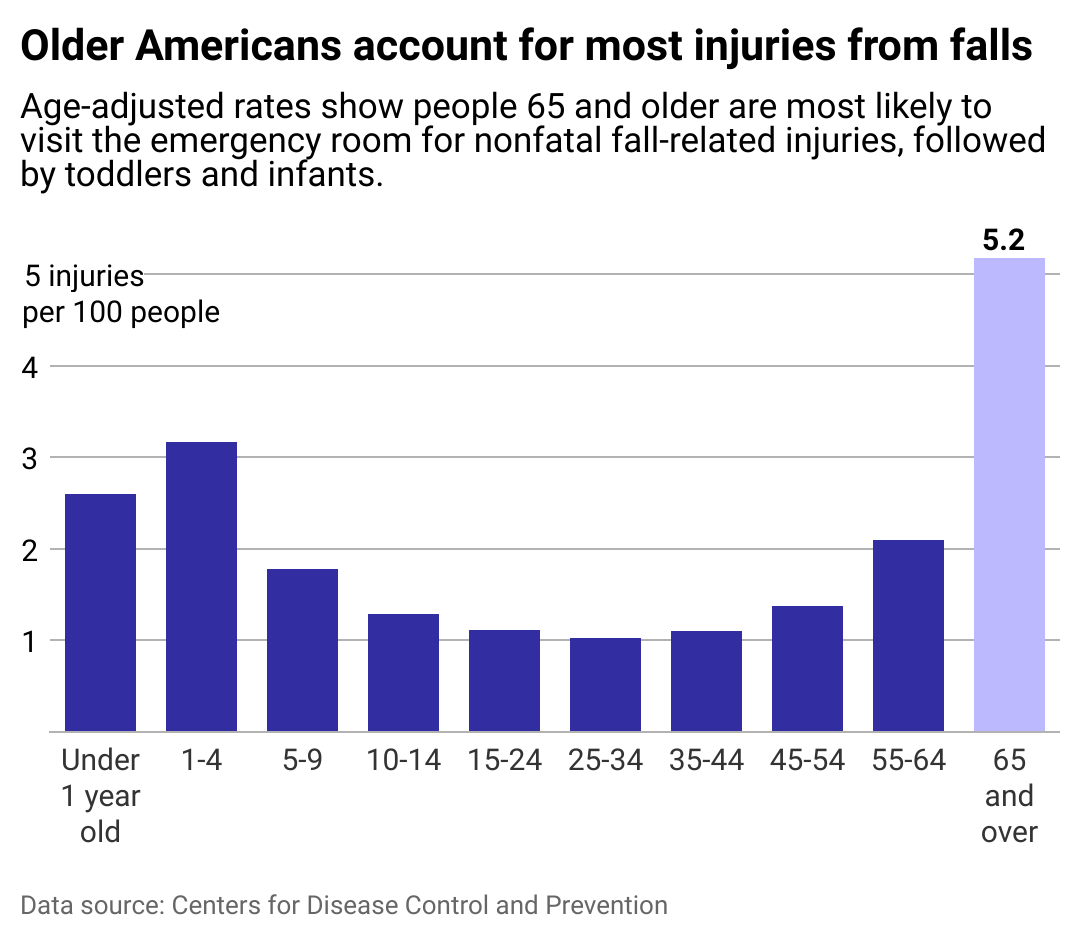Accidental falls are a leading cause of injury or even fatality for seniors. Here's how to take preventative action.

MMD Creative // Shutterstock
Accidental falls are a leading cause of injury or even fatality for seniors. Here’s how to take preventative action.
Senior man lying on the floor with walker after having fallen.
Fall-related injuries are common among senior citizens—but they don’t have to be. Though an older adult visits an emergency facility in the U.S. every 11 seconds to be treated for these injuries, according to the National Council on Aging, there are tangible steps that can be taken to mitigate the risk of falling.
In 2021, nearly 7 million people were injured from unintentional falls, about 2 in 5 (41%) of whom were 65 or older, according to the Centers for Disease Control and Prevention. Per the CDC, over 14 million people in that age group, or 1 in 4 seniors, report experiencing falls each year. The age-adjusted death rate from falls increased in 2021 to 78 per 100,000 older adults, up from 55.3 per 100,000 in 2012.
Although the CDC reports only 1 in 5 falls result in injury, even if initial breaks and bruises heal, these wounds can result in or exacerbate more long-term illnesses.
The U.S. population is aging, and the public health effects of falls will likely expand as more baby boomers age over 65. In 1920, around 1 in 20 U.S. citizens were aged 65 and older; a century later, this proportion has shot up to 1 in 6, per Census data. From 2010 to 2020 alone, this age group experienced its fastest growth rate since 1880. If falls continue occurring at the same rate among seniors, this doesn’t just mean more falls. It means more of the long-term effects of falling, including higher instances of anxiety and depression, decreased mobility, and shorter life expectancy.
That means economic effects too: Falls are costly. In 2015, fatal and nonfatal falls rang up medical costs estimated at around $50 billion nationwide. Of this, around $12 billion was not covered by Medicare or Medicaid, and instead fell to private insurance or for patients to pay out of their own pockets.
Northwell Health partnered with Stacker to explore CDC data on fall-related injuries for seniors and how they can stay safe both in and out of the home. Read on to find out who is most at risk of falling and what preventative action seniors and their families can take to avoid injury.
![]()

Northwell Health
People 65 and over experience injuries from falls most frequently
Column chart showing older Americans account for most injuries from falls. Age-adjusted rates show people 65 and older visited the emergency room for non-fatal injuries from falls about 5,200 times for every 100,000 people.
People 65 and over accounted for 2 in 5 (41%) nonfatal fall-related emergency department visits in 2021. When the rates are adjusted for age, fall-related injuries for older adults are even more common than for other age groups.
According to the CDC, of seniors who fall, nearly 2 in 5 (37%) described their injuries as severe enough to warrant medical attention and interfere with daily life, totaling roughly 5 million fall-related injuries. Common fall-related injuries include broken bones, head injuries, and hip fractures. The CDC reports older women fall more often than men of the same age, accounting for 3 in 4 hip fractures, which usually result from falling sideways rather than forward or backward.

Lordn // Shutterstock
Preventative steps to take
Senior woman reviewing information with doctor.
Although falls are common among older people, they are preventable. There are many steps people can take to mitigate the risk of serious falls and injury, including:
- Review medications with your doctor to anticipate if any may cause lightheadedness or dizziness.
- Have your eyes and feet checked annually to ensure your vision and footwear are up to date.
- Keep floors at home free of clutter to trip on and install handrails in bathrooms and along staircases.
- Stay physically active to strengthen muscles and promote good balance.
- Speak openly with family members and medical providers about your fear of falling to ensure they are cognizant and equally cautious.
Story editing by Jeff Inglis. Copy editing by Paris Close.
This story originally appeared on Northwell Health and was produced and
distributed in partnership with Stacker Studio.
